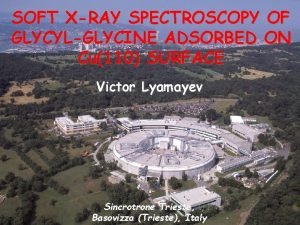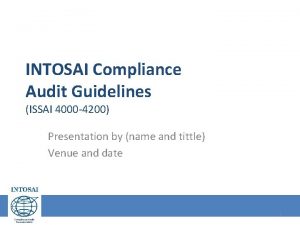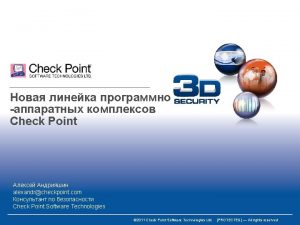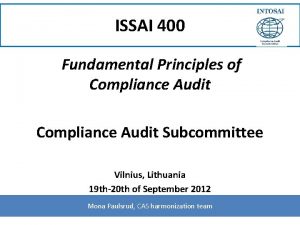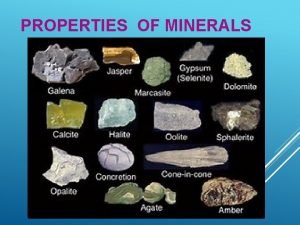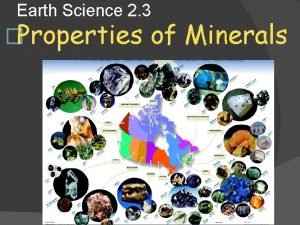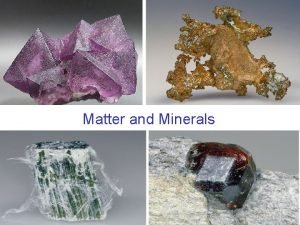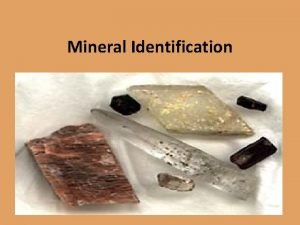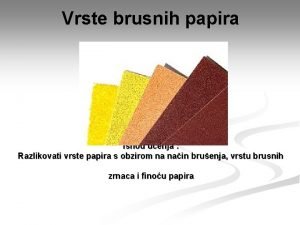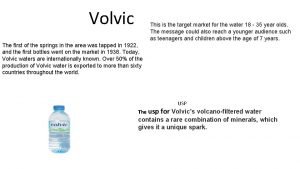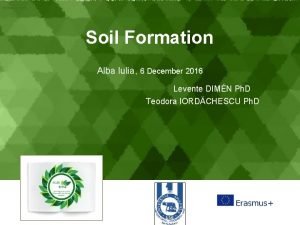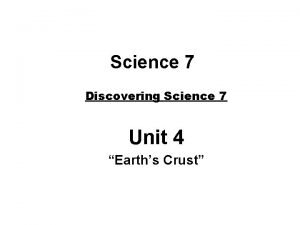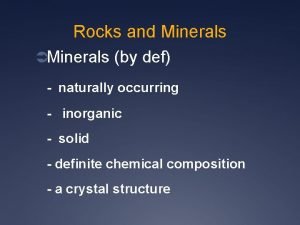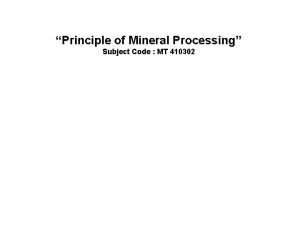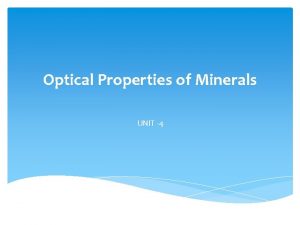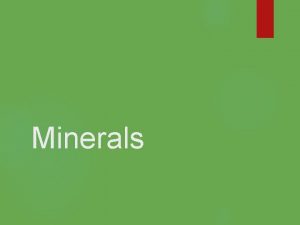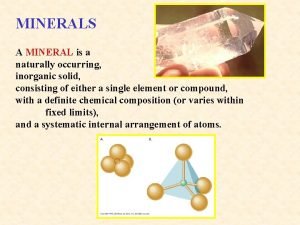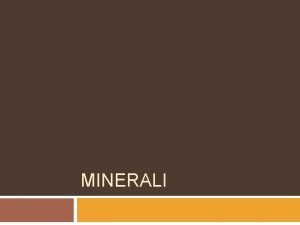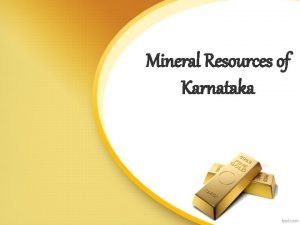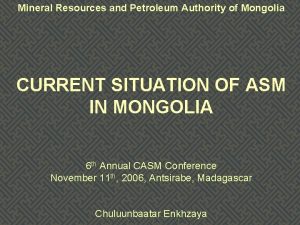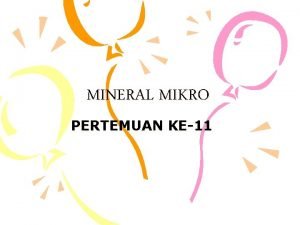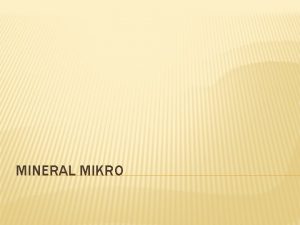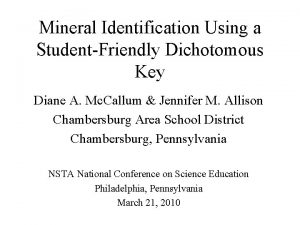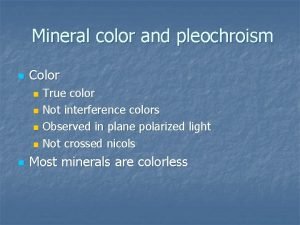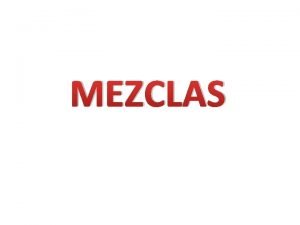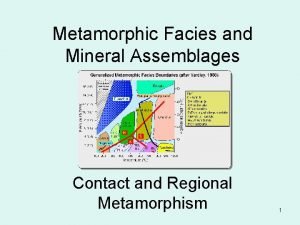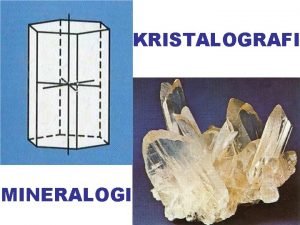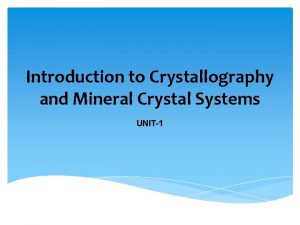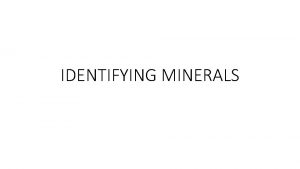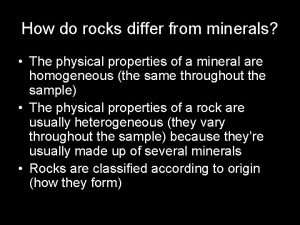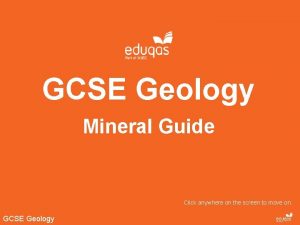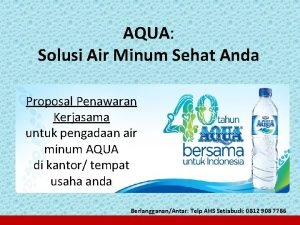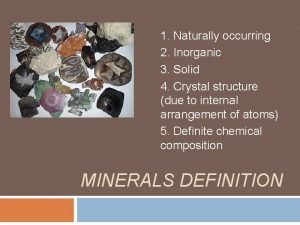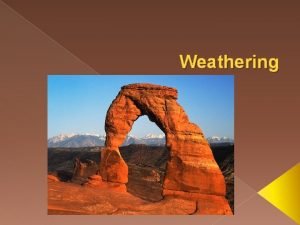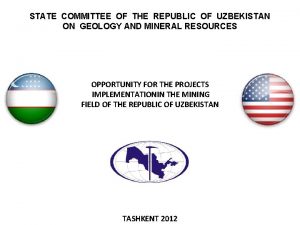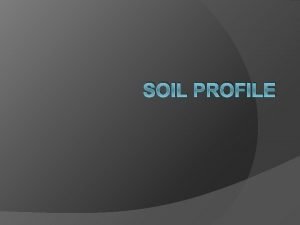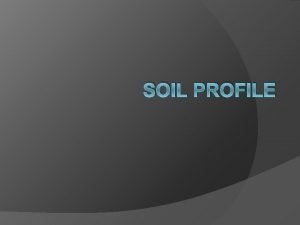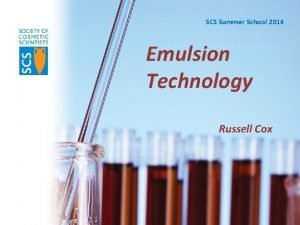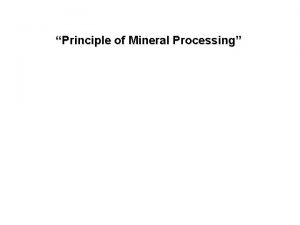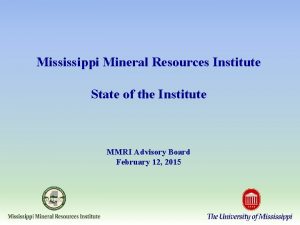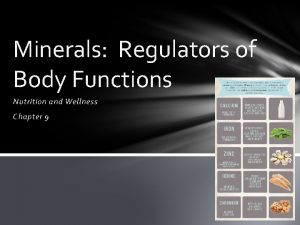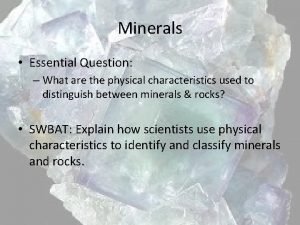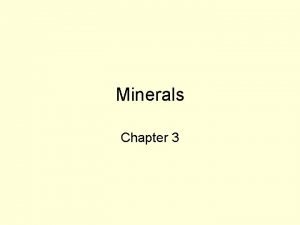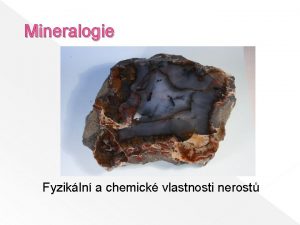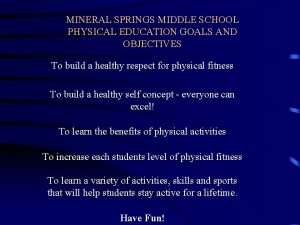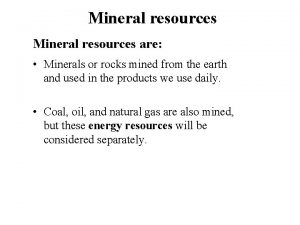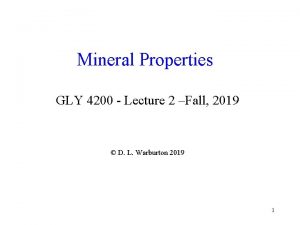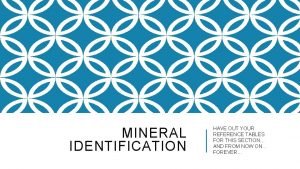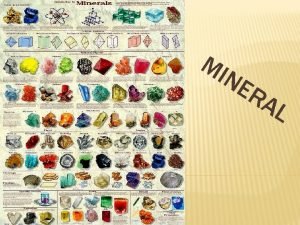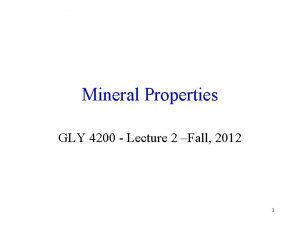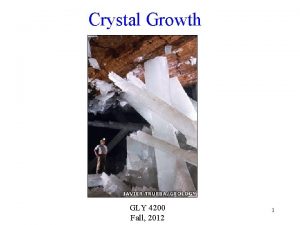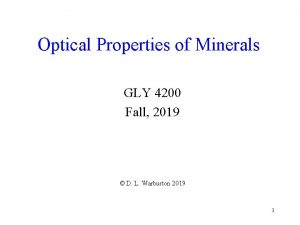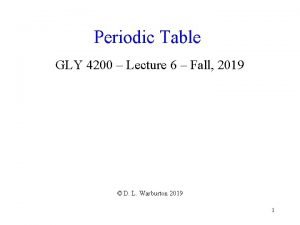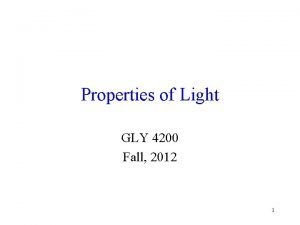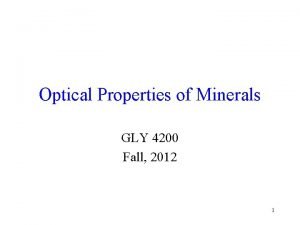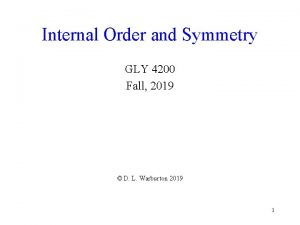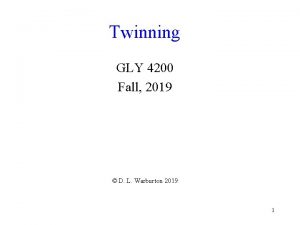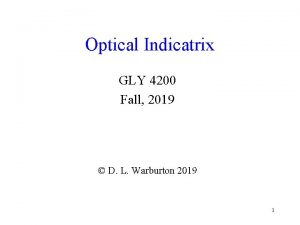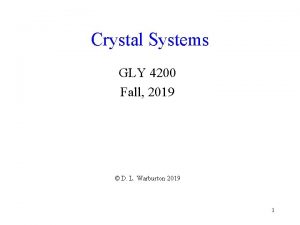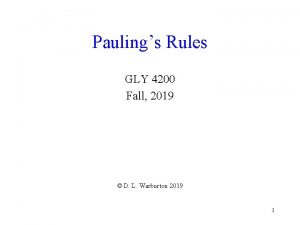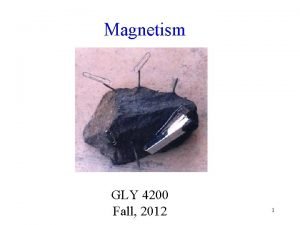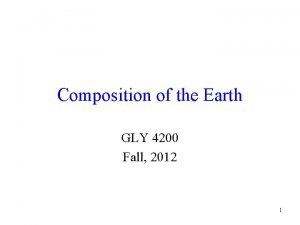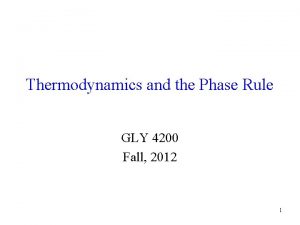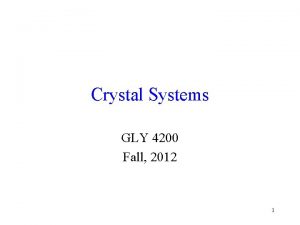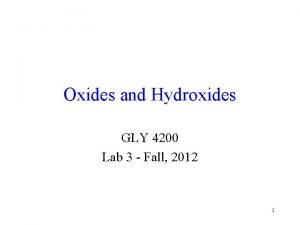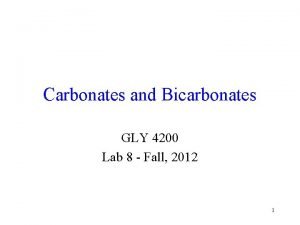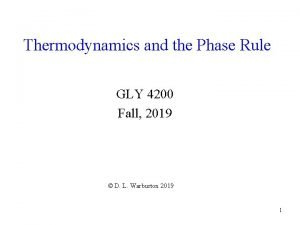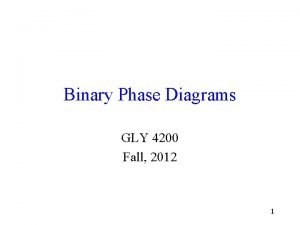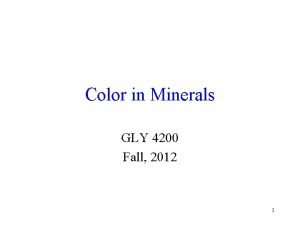Mineral Properties GLY 4200 Lecture 2 Fall 2019































































- Slides: 63

Mineral Properties GLY 4200 - Lecture 2 –Fall, 2019 © D. L. Warburton 2019 1

Hardness • Hardness may be measured in several ways § Moh’s scale – developed by Austrian mineralogist Friedrich Mohs in 1824 § Absolute scales – Brinell, Knoop, Rockwell, Vicker’s 2

Moh’s Scale • • • 1 Talc 2 Gypsum 3 Calcite 4 Fluorite 5 Apatite • • • 6 Orthoclase 7 Quartz 8 Topaz 9 Corundum 10 Diamond 3

Practical Scale • • • Fingernail 2. 2 Copper penny 3. 2 Pocket knife 5. 1 Glass 5. 5 Steel file 6. 5 Streak plate 7 4

Moh’s Scale Versus Absolute Hardness 5

Tenacity • • • Brittle Ductile Elastic Flexible Malleable 6

Cleavage Causes • In some minerals, bonds between layers of atoms aligned in certain directions are weaker than bonds between different layers • In other minerals, the number of bonds per unit area (bond density) is low • In these cases, breakage occurs along smooth, flat surfaces parallel to those zones of weakness 7

Multiple Cleavage Directions • In some minerals, a single direction of weakness exists, but in others, two, three, four, or as many as six may be present 8

Cleavage Angles • Where more than one direction of cleavage is present, it is important to determine the angular relation between the resulting cleavage surfaces: are they perpendicular to each other (right angle), or do they meet at an acute or obtuse angle? 9

Cleavage Illustration • Various types of cleavage • One directional cleavage is sometimes called “basal” cleavage 10

Basal Cleavage • Cleavage in biotite mica 11

2 -D@60º • Amphibole 12

2 -D@90º • Orthoclase 13

3 -D not @ 90º • Calcite • Picture also illustrates double refraction 14

American and British Systems • American § § Perfect Good Fair Poor • British § § Eminent Perfect Distinct Imperfect 15

Perfect • Mica 16

Good • Fluorite – 4 directions 17

Fair • Augite, a type of pyroxene 18

Poor • Apatite 19

Parting • Similar to cleavage but not present in all specimens • Usually due to a defect, such as twinning 20

Fracture • Mineral breakage other than along a cleavage or parting plane • Several types § § Conchoidal Fibrous or splintery Hackly Uneven 21

Conchoidal • Quartz 22

Fibrous 23

Splintery • Actinolite, a type of amphibole 24

Hackly • Native copper – probably from Keweenaw Peninsula, Michigan 25

Density • Mass/volume • SI units: kg/m 3 • Common units: g/cm 3 26

Specific Gravity • Ratio of the weight of the mineral, divided by the weight of an equal volume of water • Dimensionless 27

SG Examples Modifier Mineral SG Light Sulfur, graphite 1 -2 Medium Gypsum, Quartz 2 -3 Medium Heavy Fluorite, beryl Heavy Corundum, most 4 -6 metal oxides Native gold, 19+ platinum Extreme 3 -4 28

Luster • Reflection of light from a mineral’s surface • Observe on a freshly broken, untarnished surface • Broad categories: metallic, semi-metallic and non-metallic • Non-metallic, the most common, is split into a number of sub-categories 29

Metallic Luster • Left - Gold, 3 cm tall, California • Right - Copper, 10 cm across, Bolivia 30

Submetallic • Euxenite, Wyoming, 2 cm across 31

Non-metallic • • • Adamantine Vitreous Subvitreous Resinous Pearly • • Silky Greasy Waxy Dull or earthy 32

Non-metallic: Adamantine • Diamond, Zaire 1 cm. • Having the hard, sparkly look of a diamond 33

Non-metallic: Vitreous • Pollucite 3 cm. across 34

Non-metallic: Resinous • Sphalerite, 4 cm across, Spain • Having the look of amber – not quite glassy 35

Non-metallic: Pearly • Stellerite, Pakistan, 2 cm across • Having the iridescent look of mother-ofpearl (though usually just barely) • Often found on the cleavage face of a mineral having perfect cleavage 36

Non-metallic: Silky • Gypsum, variety satin spar, 10 cm across • Silky, having the look of silk, fine parallel fibers of mineral – such as chrysotile "asbestos" 37

Non-metallic: Greasy or Oily • Nepheline and cancrinite (yellow) 2 cm across, Maine • Having the look of an oilcoated substance 38

Non-metallic: Dull • Anglesite, 2 cm across, Wisconsin • Having a plain looking surface that is not submetallic • Note: oxidized metallic minerals are called dull metallic 39

Non-metallic: Earthy • Kaolinite after orthoclase, England, 2 cm across • Having the look of soil or clay 40

Luster Modifers • Splendent • Shining • Dull 41

Diaphaneity • The transmission of light through a mineral • Sometimes called transparency • Categories § Transparent § Translucent § Opaque 42

Transparent • Heulandite, Moonen Bay, Duirinish, Isle of Skye 43

Translucent • Fluorite 44

Opaque • Almandine, Mt. Lemmon, Arizona 45

Color • Idiochromatic – The color of the mineral seldom varies, and is therefore diagnostic • Allochromatic – Color varies due to impurities, or viewing angle 46

Idiochromatic • Sulfur 47

Allochromatic • Tourmaline (watermelon) 48

Streak Color • Color obtained by rubbing a mineral across an unglazed porcelain plate, known as a streak plate • Streak plates are usually white, but may be black • Color is due to a powder, with many crystals oriented in random directions, and is much more consistent than color in hand specimen 49

Streak Color Image • Varieties of Hematite • Photos by Pamela Gore 50

Streak Color Image • Quartz, whether it is smoky (left) or amethyst (right), always gives a white streak (web information) • What is wrong with this image? 51

Iridescence • Left - Covellite develops a deep blue iridescence, 4 cm across, Montana • Right - Iridescent pyrite, 4 cm across, Australia 52

Play of Colors • Labradorite, 20 cm wide, Madagascar, Seaman Museum specimen 53

Opalescence • Precious opal cabochons (largest is 15 mm), Australia • These are triplets, formed with a dark background layer, a middle layer of precious opal and a surface layer of quartz to help protect the softer opal from wear and tear. 54

Source of Opalescence • Scanning electron micrograph of amorphous silica spheres closest packed in an Australian fire opal showing red interference colors • Sphere size is ~2500 Angstroms • Photo courtesy of Hans. Ude Nissen • Cover of Reviews in Mineralogy vol. 29 "Silica" 55

Fluorescence • Upper - rare fluorescent mineral hardystonite • Lower - rare fluorescent mineral esperite • Both from Franklin, New Jersey 56

Acid Reaction • When acid is placed on the surface of certain minerals, carbon dioxide is released, producing a “fizz” • The strength of the response should be noted 57

Taste • Must be used carefully § Poisonous minerals § Diseases • Categories § Salty – Halite § Bitter – Sylvite 58

Odor • Smell of a fresh specimen • Lab specimens are usually contaminated, so this test is not usually used for lab specimens, although streak plate odor may be diagnostic • Examples § Sulphurous (rotten egg) sulfur, pyrite, sphalerite § Earthy hematite, limonite 59

Feel • Tactile response to mineral surface § § Greasy (unctuous) Talc, serpentine, graphite Rough Crystalline minerals Smooth – graphite Soapy - graphite 60

Magnetism • A few minerals are strongly attracted to a magnet • Examples § Magnetite § Pyrrhotite • A hand magnet or the needle of a Brunton compass may be used to test for magnetism 61

Lodestone • Lodestone is a naturally magnetic variety of magnetite • The iron filings cling to the rock 62

Radioactivity • Some minerals contain radioactive elements • Placing the sample next to the radiation meter will produce an audible signal, as well as a deflection of the meter, if the sample is emitting radioactivity 63
 Optical isomers of mabcdef
Optical isomers of mabcdef Gly
Gly Gly
Gly 4200 grade pay salary in uttarakhand
4200 grade pay salary in uttarakhand Srx4000 spec
Srx4000 spec Issai 4000
Issai 4000 Checkpoint 4200
Checkpoint 4200 Issai 4000
Issai 4000 Crystal shape
Crystal shape Streak properties of minerals
Streak properties of minerals Mineral properties fracture
Mineral properties fracture Objective mineral properties
Objective mineral properties 01:640:244 lecture notes - lecture 15: plat, idah, farad
01:640:244 lecture notes - lecture 15: plat, idah, farad Extensive properties and intensive properties
Extensive properties and intensive properties Physical and chemical properties
Physical and chemical properties Tvrdi mineral za brušenje
Tvrdi mineral za brušenje Who are the target market for bottled water
Who are the target market for bottled water Showeet com
Showeet com Discovering science 7
Discovering science 7 Minerals def
Minerals def 2 product formula mineral processing
2 product formula mineral processing Pengaruh pengolahan terhadap mineral
Pengaruh pengolahan terhadap mineral Symmetrical extinction of minerals
Symmetrical extinction of minerals A narrow channel or slab of a mineral
A narrow channel or slab of a mineral Mineral vs element
Mineral vs element Svinčevo siv mineral
Svinčevo siv mineral Minerals found in karnataka
Minerals found in karnataka Mineral resources and petroleum authority of mongolia
Mineral resources and petroleum authority of mongolia Mineral mikro
Mineral mikro Mineral mikro
Mineral mikro Dichotomous key for rocks
Dichotomous key for rocks True color of mineral
True color of mineral Spray fijador es solución coloide o suspension
Spray fijador es solución coloide o suspension Isograds
Isograds Minerales silicatos ejemplos
Minerales silicatos ejemplos Precipitation of proteins by strong mineral acids
Precipitation of proteins by strong mineral acids Contoh mineral monoklin
Contoh mineral monoklin Pedion crystal form
Pedion crystal form Luster of minerals
Luster of minerals What is gypsum
What is gypsum Mica mineral hardness
Mica mineral hardness Mineral acid examples
Mineral acid examples Chapter 13 mineral resources and mining worksheet answers
Chapter 13 mineral resources and mining worksheet answers Contoh proposal penawaran produk air mineral
Contoh proposal penawaran produk air mineral Paggamit ng yamang mineral
Paggamit ng yamang mineral Alaska state mineral
Alaska state mineral Inorganic mineral definition
Inorganic mineral definition Water abrasion
Water abrasion Uzbekistan
Uzbekistan Oaebcr
Oaebcr O a e b c r horizons
O a e b c r horizons Mineral oil hlb
Mineral oil hlb Principles of mineral processing
Principles of mineral processing Mississippi mineral resources institute
Mississippi mineral resources institute Mineral cheat sheet
Mineral cheat sheet Characteristics of minerals
Characteristics of minerals The splitting of a mineral along smooth flat surfaces
The splitting of a mineral along smooth flat surfaces Minerál s největší hustotou
Minerál s největší hustotou Mineral springs middle
Mineral springs middle Is quartza mineral
Is quartza mineral Non metallic pearly
Non metallic pearly Mineral reference table
Mineral reference table Mineral antagonism
Mineral antagonism Primary emulsion formula for fixed oil and mineral oil
Primary emulsion formula for fixed oil and mineral oil


